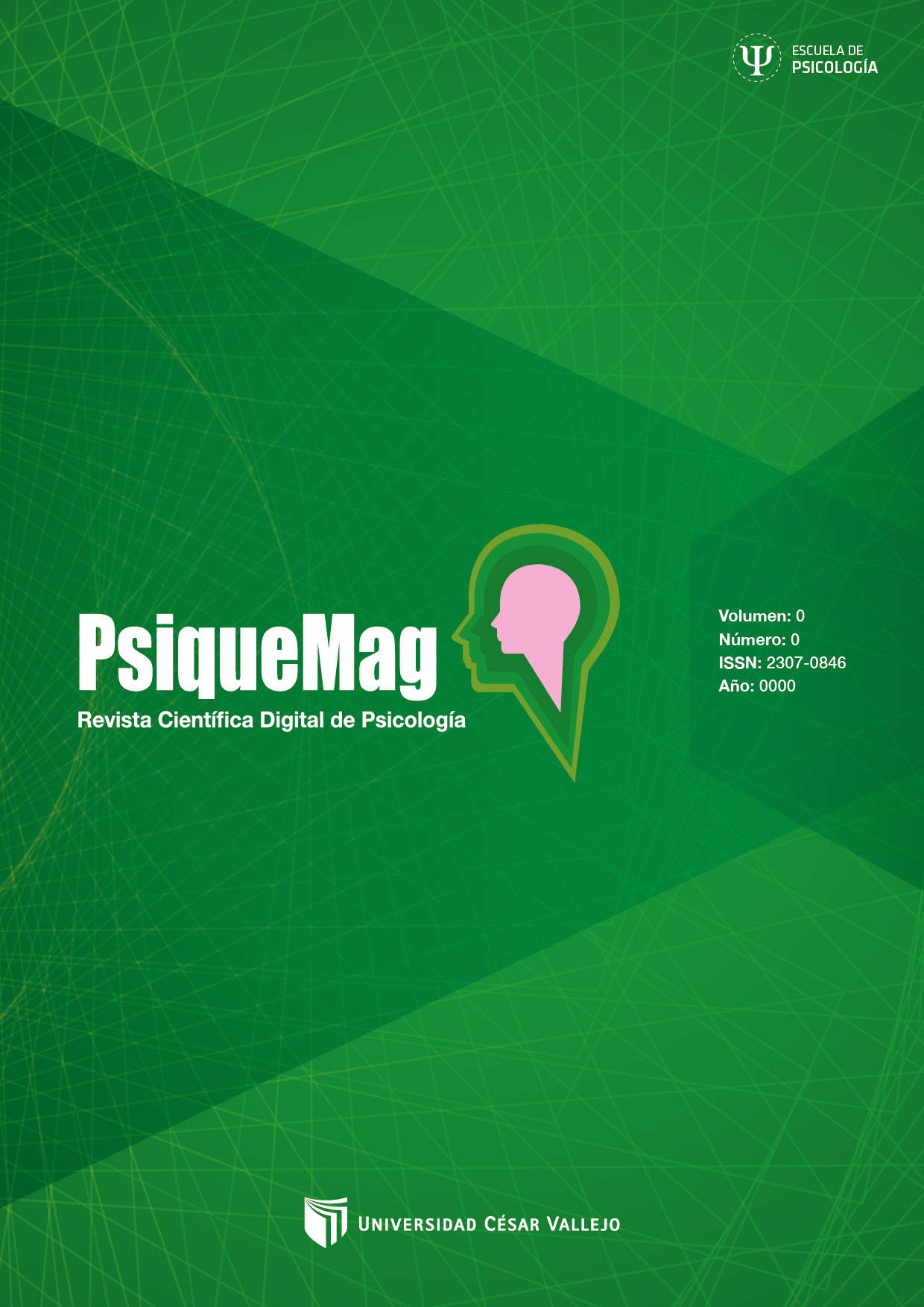Principle of invisibility of sexuality: The dream narrative of sexual behavior
DOI:
https://doi.org/10.18050/psiquemag.v12i2.2388Keywords:
Sexual health, sexuality, dream, sexual dreams, love.Abstract
Couples sex therapists listen to the self-reported narrations of their patients' personal disturbances. In general, patients never bring witnesses, neither photos, nor videos, nor audios, only their own intrapersonal testimony; processing an interview of a disorder referred to sexuality is like processing a dream dream, it meets the three criteria of subjective reality narration: space, time and plot; the patients narratively describe their erotic behavior, in addition, said behavior is intra-psychic, therefore behavioral scientists, who analyze observable and concrete behaviors, should not process or examine them; likewise, most of sexuality occurs in a psychic space or psychodynamic field titled: intra-subjective, inter-subjective, and trans-subjective; the only ones who can access and understand it would be psychoanalysts and other theorists of the psychodynamics of personality. Therefore, in order to achieve comprehensive sexual health, they must be interpreted under the principle of (social) invisibility of sexuality and to understand them, they must use some dream analysis concepts, such as dream disfigurement, latent content and/or dream manifest content.
Downloads
References
Beldad, N. (2016) Escritura creativa: Guía de técnicas narrativas. https://nestorbelda.com/wp-content/uploads/2022/04/gtn_parte_6_ness_belda.pdf https://read.amazon.com/kp/embed?linkCode=kpe&ref_=cm_sw_r_kb_dp_CZE2Cb6HS4VDF&asin=B01CVPF3AI&tag=kpembed-20&amazonDeviceType=A2CLFWBIMVSE9N&from=Bookcard&preview=newtab&reshareId=8WB7XVYGNFRVCAKQZ575&reshareChannel=system
Briones, C. (2016) Orígenes. El universo, la vida, los humanos. Centro de Astrobiología (CSIC-INTA). https://www.lavanguardia.com/ciencia/planeta-tierra/20181210/453469030889/como-empezo-vida-tierra-origen-evolucion.html
Díaz, J. L. (2011). Cronofenomenología: El tiempo subjetivo y el reloj elástico. Salud mental, 34(4), 379-389. http://www.scielo.org.mx/scielo.php?script=sci_arttext&pid=S0185-33252011000400010&lng=es&tlng=es.
Díaz-Alonso, G. (1995). Historia de la anticoncepción. Revista Cubana de Medicina General Integral, 11(2), 192-194. http://scielo.sld.cu/scielo.php?script=sci_arttext&pid=S0864-21251995000200015&lng=es&tlng=es.
Fernández, M. (2013). Metafísica del amor sexual [De la verdad de Schopenhauer y la mentira del amor platónico.
(Tesis de la filosofía de la Universitat de Barcelona).
Freud, S. (1900). Volumen IV. La interpretación de los sueños. Editorial Amorrortu.
Flores-Colombino, A. (2020). La danza del cortejo y sus múltiples variables. Revista Brasileira De Sexualidade Humana, 16(2). https://doi.org/10.35919/rbsh.v16i2.453
Fromm, E. (1959). El arte de amar. Editorial Paidós.
https://drive.google.com/file/d/0B2-ysvjbcBzgSngxUmR1Tk9ZQWs/view
Gómez-Zapiain, J. (2013). Psicología de la sexualidad. Alianza editorial.
Granero, M. (2014). Sexología basada en la evidencia: historia y actualización. Revista Costarricense de Psicología, vol. 33, núm. 2, 2014, pp. 179-197. Colegio Profesional de Psicólogos de Costa Rica. San José, Costa Rica https://www.redalyc.org/pdf/4767/476747238002.pdf
Hobson, J. A. (1994). El Cerebro Soñador. Colección de Psicología, Psiquiatría y Psicoanálisis.
Hobson, J. A. (2005). Los sueños como delirio. Cómo el cerebro pierde el juicio. Editorial Fondo de Cultura Económica.
Kinsey, A. C., Pomeroy, W. B. y Martin, C. E. (1949). Conducta sexual del varón. Editorial Interamericana.
Krakov, H. y Pachuk, C. (1998). “Tres Espacios Psíquicos” en “Diccionario de Psicoanálisis de las Configuraciones Vinculares”, Ediciones Del Candil, B.A., 1998.
Lacan, J. (1977). “Momento de concluir”/Clase 15 nov 1977. Seminario 25.
Lee, J. A. (1976). The colors of love. EEUU: Englewood Cliffs: Prentice-Hall.
McNutt, E.J., Hatala, K.G., Miller, C. Evidencia de la huella de la diversidad locomotora de los primeros homínidos en Laetoli, Tanzania. Nature 600, 468–471 (2021). https://doi.org/10.1038/s41586-021-04187-7
Organización Mundial de la Salud (2014) Documentos básicos. 48va Ed. Organización Mundial de la Salud.
Pereyra Quiñones, J. L., Ames Arenas, J. J., Monetti Adriana, G., Rivera Salazar, M. O., Vega Cotrina, W., Estrada Alomia, E. R., & Iparraguirre Yaurivilca, N. E. (2023). SIETE DIMENSIONES DE LA MÚSICA SEXUAL: Comportamiento sexual monódico y diádico en parejas. PsiqueMag, 12(1), 73–81. https://doi.org/10.18050/psiquemag.v12i1.2399
Pereyra, J.L. (2020). Propiedades psicométricas de la Escala 17EAS de ero eroatracción sexual en universitarias de Boyacá y
Lima, 2020. Editorial Neotest.
Real Academia Española (2021). Diccionario de la lengua Española. Versión electrónica. https://dle.rae.es/sue%C3%B1o
Santacruz, R. (1997). El arte de escribir Introducción a la narratología. Colección catedra. Editorial Coveñas.
Schopenhauer, A. (1818). El mundo como voluntad y representación. Ed. Rebeliones.
Thodes, M. E. (2020). El desarrollo de la consciencia y la actividad onírica. Trilogía (Santiago), 32(43), 66-88. https://sitios.vtte.utem.cl/trilogia/wp-content/uploads/sites/9/2021/12/revista-trilogia-facultad-humanidades-y-tecnologias-de-la-comunicacion-social-vol32-n43-2020-Thodes.pdf
Velayos, J. L., Moleres, F. J., Irujo, A. M., Yllanes, D., & Paternain, B.. (2007). Bases anatómicas del sueño. Anales del Sistema Sanitario de Navarra, 30(Supl. 1), 7-17. Recuperado en 18 de marzo de 2023. http://scielo.isciii.es/scielo.php?script=sci_arttext&pid=S1137-66272007000200002&lng=es&tlng=es
Williams, G.C. (1975) Sex and Evolution. Prensa de la Universidad de Princeton https://scholar.google.com/scholar_lookup?&title=Sex%20and%20evolution&publication_year=1975&author=Williams%2CGC
Downloads
Published
How to Cite
Issue
Section
License
Copyright (c) 2023 José Luis Pereyra Quiñones

This work is licensed under a Creative Commons Attribution 4.0 International License.
You are free to:
- Share — copy and redistribute the material in any medium or format
- The licensor cannot revoke these freedoms as long as you follow the license terms.
Under the following terms:
-
Attribution — You must give appropriate credit, provide a link to the license, and indicate if changes were made. You may do so in any reasonable manner, but not in any way that suggests the licensor endorses you or your use.












